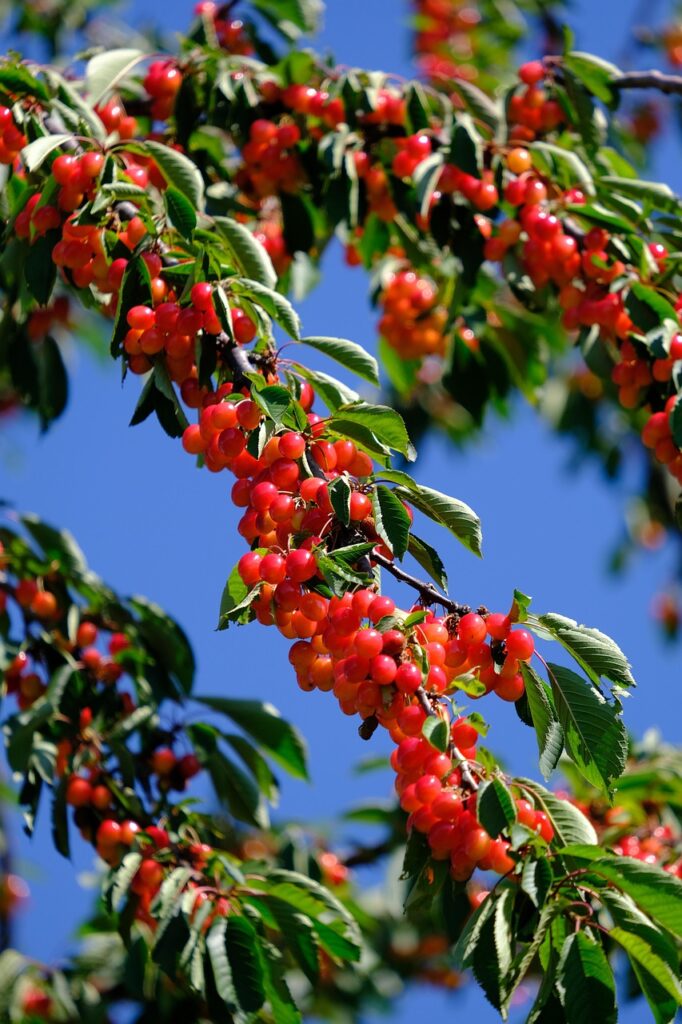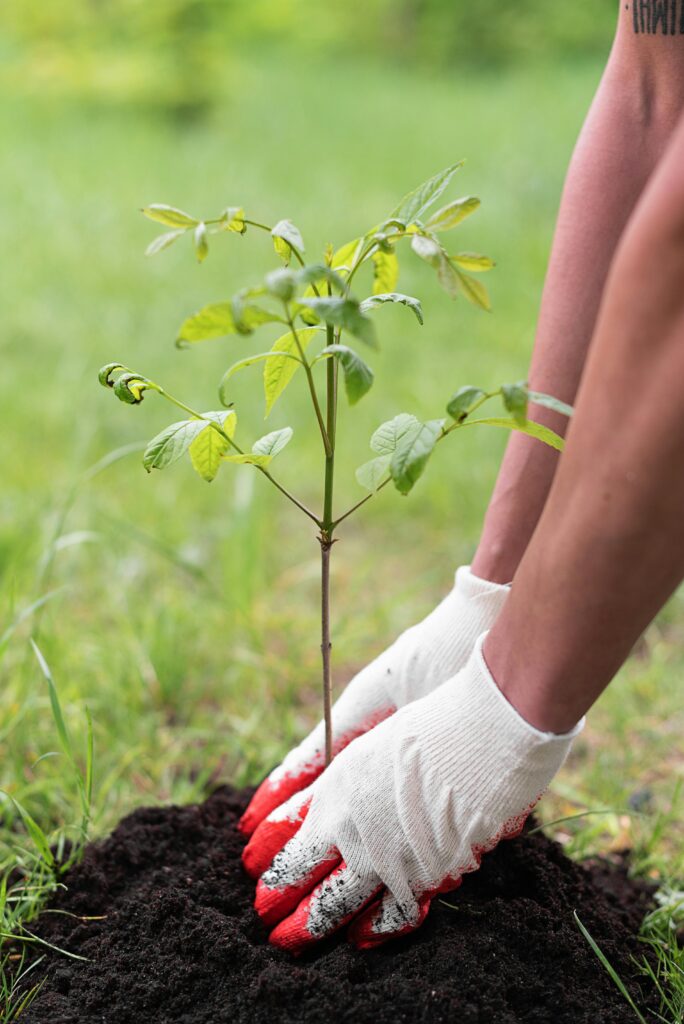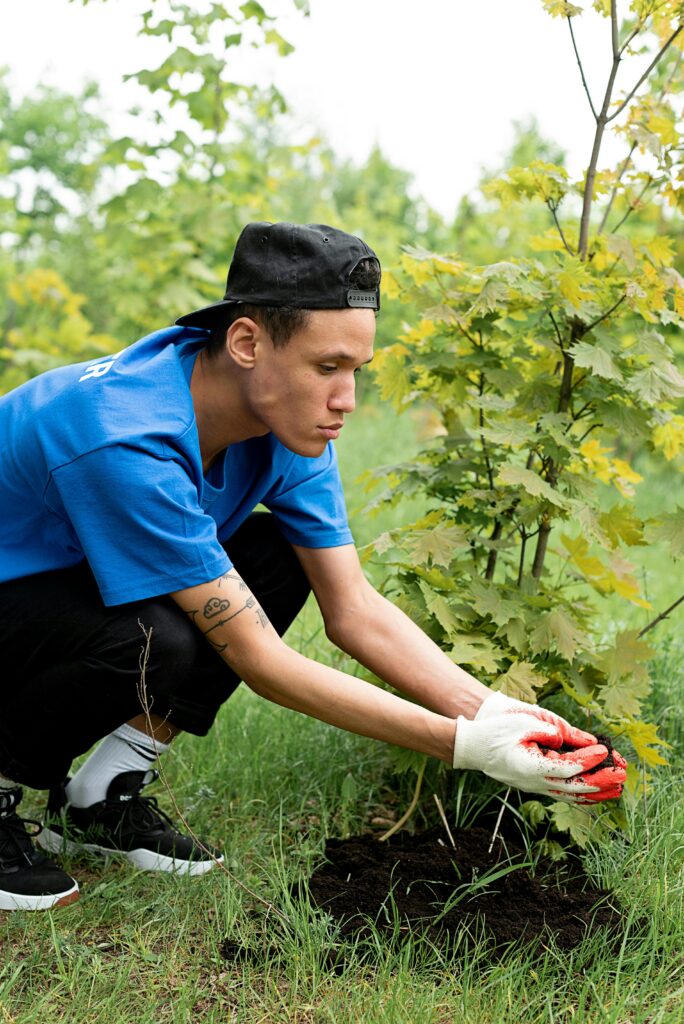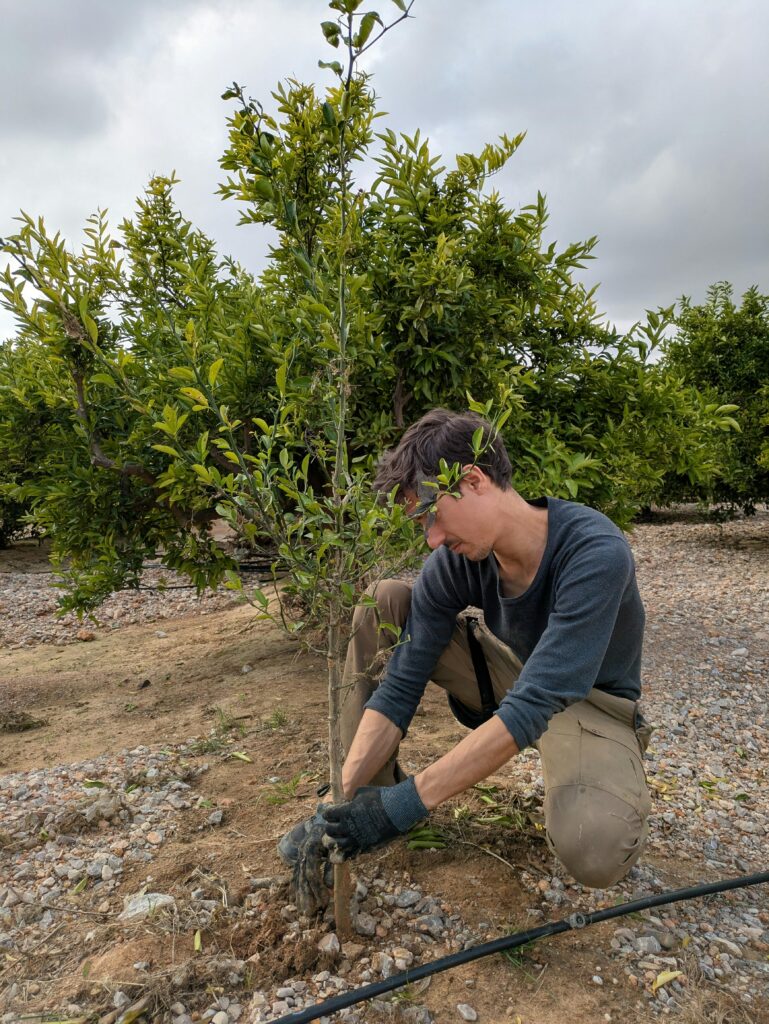Planting and Care Tips for Young Fruit Trees

Planting a fruit tree is one of the best things you can do for your backyard, and for your community! Fruit trees are amazing resources, and with a little care, can produce enough fruit to feed you and many members of the NFFTT community for years to come.
On This Page

Planting Young Fruit Trees
Spring is the best time to plant your fruit trees!
When buying your young tree make sure that the tree hasn’t flowered. Trees are best planted when they are in the dormant stage.
When planting a fruit tree, you want the hole to be twice the size of its root ball – but not too deep! A good measurement is to look at the base of the tree and make sure that is as far as the soil goes.
Ensure the surrounding area of the hole has been removed of any grass for a couple of feet to reduce competition for nutrients. Enhance your soil’s health by adding in some manure in the hole.
A post to support your young tree is ideal and should be put in the ground. Loosely tie the young tree to the post for support against the wind.
Finally, stamp the loose soil down to compact it with your feet.

Choosing the Best Planting Site
No matter the tree, ensure that the area you are choosing is getting enough sunlight and has good soil. If the soil is too wet it may damage your tree reducing your chances for fruit significantly.
- Apple trees grow well in a wide range of temperatures, however if the air temperature goes below -30°C, it can harm the tree. Apple trees need 6-8 hours of sunlight for optimal growth. The best side to plant them is a north facing slope as this reduces the chance that the next freeze will kill. The soil should be well-drained yet hold some moisture so we suggest low to medium textured soil. Keep apple trees away from wooded areas as pests and diseases can be contracted.
- Cherries prefer a soil pH of 6.5. Do not compact the soil for sweet cherries as it can accelerate root rot. They prefer light soil and a site that is sunny and gets good air circulation.
- Grapes like slightly more acidic soil to really thrive. A pH level of 5.0 to 6.0 is ideal and is suggested that if the soil has a neutral pH to use ground sulfur to lower it to the ideal pH. Loose, well-drained soil is important for root development. Look for higher ground on your land to plant grapes as it will provide better water and air circulation.
- Plums grow best in loam type soils, please avoid clay soils when planting them. They enjoy a soil pH of 5.0 to 6.5 which is more acidic to neutral. Try to stay away from high moisture soils, plums prefer well drained soils.
- Quince trees like more moist soils throughout the hot summers, but well-drained soils in the winter. Light chalky soils should provide your quince with plenty of organic matter added before planting. They also prefer a sunny location for optimal growth.
- Serviceberries grow best in well-drained soils, try to stay within the loam soils (sandy/silt). Most varieties are adapted to cold weather (up to -50 degrees C) which is perfect for Canada. Serviceberries prefer a pH level of 6.0 to 7.0, so more neutral compared to other fruit.

Caring for a Young Fruit Tree
- For the first two years after planting, remove all of the baby fruit from your tree to redirect its energy towards establishing a healthy root system.
- Water the tree at least twice a week. Generally you want to use enough water equal to 3 buckets for each tree every time you water it, but when watering make sure to go slow so you do not drown them.
- Feed your tree annually in the early spring by putting compost or well-rotted manure around its roots.
- Evaluate your tree’s nitrogen needs by examining the new growth on their branches as young fruit trees are often nitrogen deficient, and you may need to add an organic source of nitrogen to help them along.
- Weed around your fruit trees and ensure that there is nothing planted close to them that will compete with your tree for water and nutrition. That means no weeds, no flowers, no shrubs and no veggies growing within 10 square feet (1 square metre) of your tree.
- Mulch in the spring to help the soil retain its moisture. Mulch is a layer of material that is spread evenly over the soil that surrounds the tree.
- Apple, pears, cherries, plums and peaches should be mulched with 6 to 8 inches of hay or straw in May. The mulch should be reapplied throughout the season and removed from trees at the end of the summer or early September.
- Grapes don’t usually need any mulch because they have a root system that is quite deep. Mulching for grapes is usually used to control weed growth.
- Raspberries use hay or straw for their mulch because it is beneficial when used around new plants. We do not recommend routine application of mulch after the first year.